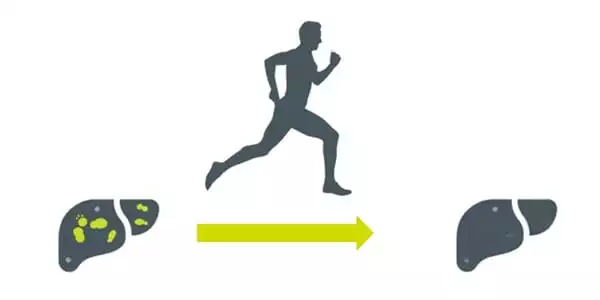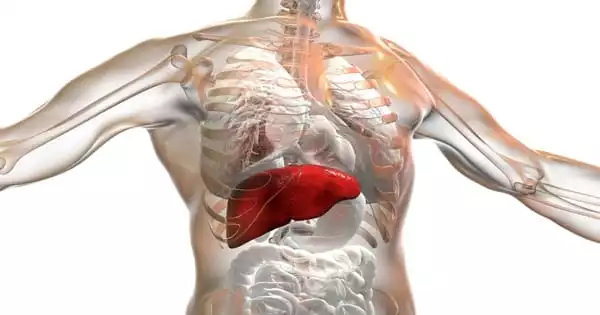Exercise on a regular basis is essential for a healthy liver. Exercise reduces liver stress, boosts energy levels, and aids in the prevention of obesity, which is a risk factor for liver disease. Aim for 150 minutes of exercise per week, such as brisk walking or swimming.
Exercise not only strengthens the muscles but also helps to prevent the formation of fatty liver. A new study from the German Center for Diabetes Research (DZD), Helmholtz Munich, and Tübingen University Hospital reveals which molecular adaptations, specifically of the liver mitochondria, can be seen in this process. The findings have been published in the journal Molecular Metabolism.
Non-alcoholic liver disease affects one out of every four people worldwide (NAFLD, also called metabolic liver disease MAFLD). People who are affected are more likely to have type 2 diabetes, as well as an increased risk of liver cirrhosis and cardiovascular disease. Furthermore, NAFLD is linked to an increased risk of death. An imbalance in energy intake and consumption has been proposed as a cause of the disease. This causes fat deposits in the liver and, over time, impairs mitochondrial function – both of which are risk factors for the development of hepatic insulin resistance and liver inflammation.
The findings are consistent with the approaches of ongoing clinical studies in which inhibitors are being tested against some of the targets identified here, such as the mitochondrial pyruvate transporter.
Prof. Dr. Cora Weigert
How exercise modifies the adaptation of the liver to increased energy intake
Lifestyle changes such as increased physical activity are recommended to prevent and treat NAFLD. Researchers from the Institute of Clinical Chemistry and Pathobiochemistry at Tübingen University Hospital and the Institute of Diabetes Research and Metabolic Diseases (IDM) of Helmholtz Munich at the University of Tübingen investigated how regular exercise affects the liver’s adaptation to increased energy intake and what role skeletal muscle plays in this process. The researchers worked with the Helmholtz Institute of Experimental Genetics (IEG) in Munich, the Leibniz Institute for Analytical Sciences in Dortmund, and the Dalian Institute of Chemical Physics in China.
Exercise can prevent fatty liver disease caused by overnutrition
Dr. Miriam Hoene and Dr. Lisa Kappler fed mice a high-energy diet in their study. Some of the mice were also subjected to treadmill training on a regular basis. Following the six-week intervention, the researchers examined the animals’ livers and muscles for changes in the transcriptome, mitochondrial proteome, lipid composition, and mitochondrial function.

Training was found to regulate important enzymes involved in glucose and fructose degradation in the liver, as well as mitochondrial pyruvate metabolism. The substrate burden for mitochondrial respiration and lipid synthesis can thus be reduced. As a result, less fat is stored in the liver, and specific lipids such as diacylglycerol species are reduced. Furthermore, glucose control improves in the exercise-trained mice. In addition, an increased respiratory capacity of the skeletal muscles relieves the metabolic stress in the liver.
The systems biology data provide a comprehensive understanding of the liver and muscle’s molecular adaptation to a high-energy diet, training, and combinatorial effects. “The findings are consistent with the approaches of ongoing clinical studies in which inhibitors are being tested against some of the targets identified here, such as the mitochondrial pyruvate transporter,” said DZD scientist Prof. Dr. Cora Weigert, the study’s leader and professor of molecular diabetology at Tübingen University Hospital. “They also demonstrate that regular physical activity regulates multiple targets at the same time, key nodes of metabolic pathways, an effect that cannot be achieved with monotherapy.”
Mitochondria
The mitochondria’s job is to make energy available to the cell through cellular respiration. This is a metabolic process in which energy stored in glucose and other organic substances is obtained by breaking the chemical bond, yielding adenosine triphosphate, or ATP in the end. This is the body’s most important energy molecule. Mitochondria are thus regarded as the cell’s power plants.
Exercise increases fatty acid oxidation, decreases fatty acid synthesis, and protects mitochondrial and hepatocellular damage by reducing the release of damage-associated molecular patterns in the liver. To summarize, physical exercise is a tried-and-true therapeutic strategy for treating fatty liver disease.















